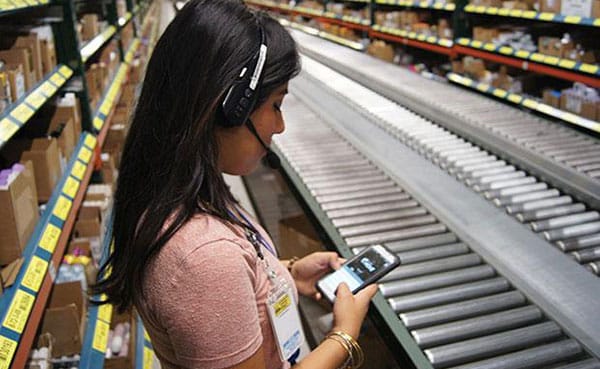Warehouse Demand Jumps In Urban Centers
Demand for warehouse space jumped 43% last month, according to CBRE Group, after a 29% drop the previous month. The bigger surprise in these numbers is that many of the new leases are for facilities close to larger urban areas, not in traditional distribution hubs farther out from urban cores.
The sudden increase in demand for urban DCs could be part of a broader restructuring of distribution networks to meet consumers’ rapid shift to online ordering and quick delivery.
During the early stages of the recent shut-downs, retailers relied heavily on their stores to fulfill online orders for same-day pick up and delivery. Many of the new warehouse leases appear to be for urban fulfillment centers to relieve pressure on stores. Jess Dankert, VP of supply chain for the Retail Industry Leaders Association noted, “There’s a repositioning of the inventory and adapting systems for this new Covid-era of shopping.”
Another report on the warehouse real estate market projects a continuing boom in fulfillment center space due to the growth in ecommerce. Ecommerce requires roughly three times the warehouse space of traditional retail, according to Prologis. Many retailers are also increasing their inventories 5-10% in order to be better prepared for demand shocks. These shifts are predicted to increase U.S. warehouse demand by as much as 400 million square feet over the next few years.
DC Hiring Bounces Back In May
Despite a drop of 90,500 warehouse jobs in April due to government mandated lock-downs, the losses were reversed in May as warehouses and distribution centers scrambled to catch up to increasing ecom demand. By the end of May, warehouse and storage operators had created over 8,500 jobs.
In addition to more ecom orders – which are more labor-intensive than traditional store replenishment – DCs have also had to take steps to keep DC workers safe. For one, they have devoted more man-hours to cleaning. And other safety measures – staggering break times, social distancing, one way aisles etc. – may directly impact productivity.
New Tech Keeps Workers Distanced In The DC
DCs have taken a number of steps to enforce distancing and improve sanitation in their operations – as described in an earlier Lucas blog – and new technologies are starting to come into play. Among others, Amazon and Zebra have created tech to help keep warehouse workers six feet apart while tracing contact that may happen throughout the day.
Amazon’s “Distance Assistant” (video below) combines machine learning and depth sensors to determine if workers are appropriately distanced. This tech includes a monitor with a live video that shows either green or red circles based on the 6 feet protocol. Although it may not provide immediate feedback that a mobile device or wearable may provide, it does serve as a visual reminder to employees who can see the screen above the walkway.
Zebra introduced a MotionWorks® proximity solution earlier this month. The solution provides proximity and contact tracing insights, dashboards and reports to employers, along with alerts to the employees. The solution utilizes Zebra mobile devices to ease implementation and adoption while minimizing additional capital costs.
To Get The Most Out Of Robots, Optimize Your People
Some DCs have increased their investments in robots as a means to reduce the number of workers they need to pick orders. But most DCs cannot justify the high initial investment cost for robots. Two Lucas engineers recently described how optimizing the work of people can improve the economics of robots.
While autonomous mobile robots (AMRs) are a lower-cost alternative to traditional automation systems, they are by no means “cheap.” Even a relatively small DC will shell out well over $1 million for robots to work alongside 10 human pickers. Paradoxically, a key to improving the business case for AMRs is to optimize the work of people.
Justin Ritter and Ron May explain how DCs can optimize their workforce alongside robots and reduce the number of AMRs per picker. Fewer bots per picker improves the economics and ROI for robots. Read more in their recent blog published on Modern Materials Handling.






